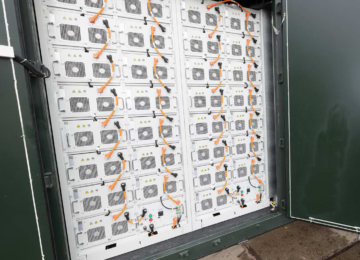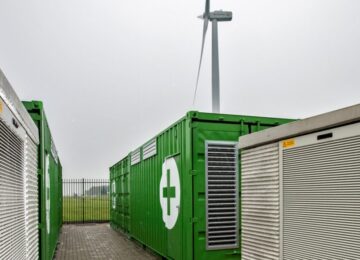European research: Dutch energy storage market grows
Earlier this month, EASE, the European umbrella organization for the energy storage market, published its annual market research EMMES 9.0. This market research includes a country analysis, which, among other things, outlines the development of the Dutch energy storage sector.
Installed capacity grows to 758 MW
In 2024, the Netherlands realized an installed capacity of 758 MW of electrochemical energy storage, with projected growth to 9 GW by 2030. This growth is mainly driven by new flexible grid contracts that allow storage projects to receive discounts of up to 65 % on grid management costs through non-fixed connections. The planned abolition of the net-metering scheme in 2027 will further boost the residential market, while the rollout of electric vehicle charging infrastructure will drive additional demand for the business segments.
| Segment | 2024 installed capacity (MW) | Share of total 2024 | Drives |
| Front-of-Meter | ~455 MW | ~60 % | Flexible grid contracts (65 % discount on grid management costs), high revenues from grid services |
| C&I | ~230 MW | ~30 % | Rapid growth due to business need for peak cover and battery-integrated charging stations for electric vehicles |
| Residential | ~ 73 MW | ~10 % | Limited by current netting, but in build-up due to preparation for abolition of netting in 2027 |
Germany is European leader
By comparison, Germany is well above the Netherlands with an installed capacity of 12.3 GW in 2024. Germany sees its capacity continue to grow to over 45 GW by 2030, thanks in part to favorable innovation tenders and GridBooster projects that now secure most of the pre-funding. Italy leads the rankings with 6.9 GW by 2024 and a prospect of nearly 19 GW by 2030, driven by capacity auctions (MACSE) and a shift from subsidies to commercial applications. In the United Kingdom, installed capacity of 5.8 GW by 2024 is among the highest levels in Europe; this is expected to grow to nearly 24 GW, with first pilot long-duration energy efficiency (LDES) projects now in development in addition to traditional business models.
Netherlands settles in middle ground
Relatively speaking, the Netherlands is in the middle of the European spectrum: it lags behind the big three (Germany, Italy, UK) but outperforms smaller markets such as Poland (221 MW by 2024) and Greece (76 MW). Thanks to the high share of renewable generation and a tight grid, a potential of about 9 GW FoM (Front-of-Meter) storage is needed to ensure future grid flexibility. The success of the Dutch sector will largely depend on the speed with which bottlenecks around grid connections are resolved and additional incentives, such as abolishing net-metering and resolving high transmission tariffs, are actually implemented.
According to the study, these fundamentals allow the Netherlands to become one of the leading markets for energy storage in Europe in the long term, provided the combination of technological innovations, market incentives and grid development continues to go hand in hand.
| Country | 2024 installed capacity | 2030 forecast capability | Growth 2024-2030 | Main drivers |
| Netherlands | 758 MW | 9 000 MW | +1 086 % | Flexible grid contracts, PV + battery subsidy, net-metering reduction |
| Germany | 12 300 MW | 45 400 MW | +269 % | Innovation tenders, GridBoosters, residential market growth |
| Italy | 6 900 MW | 18 900 MW | +174 % | MACSE auctions, merchant projects, Superbonus shift |
| VK | 5 800 MW | 23 800 MW | +310 % | Capacity market, LDES pilots, 0% VAT incentive |
| Poland | 221 MW | 12 700 MW | +5 648 % | Capacity and flexibility markets |
| Greece | 76 MW | 4 600 MW | +5 947 % | Storage auctions, renewable ambition, grid acceleration measures |





